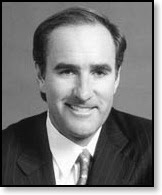
Published in April, 2001, Harvard Business Review on Mergers and Acquisitions is a book which will help managers think clearly about the consequences of merging their company so that they can make a truly educated decision about such a strategic business move. This is an important book today considering the modern trends toward merging companies, including buyouts and joint ventures. Keeping track in today’s world of who owns which company is difficult, but not as difficult as deciding if this is the right direction for a particular company. Luckily this book, which includes discussions from major experts in the world of business today, can help make this decision easier. Among the many informed discussions in this book are:
• Lessons from Master Acquirers: A CEO Roundtable on Making Mergers Succeed by Dennis Carey;
• The Fine Art of Friendly Acquisitions by Robert J. Aiello and Michael D. Watkins;
• Are You Paying Too Much for That Acquisition? by Robert G. Eccles, Kersten L. Lanes, and Thomas C. Wilson;
• Stock or Cash?: The Trade-Offs for Buyers and Sellers in Mergers and Acquisitions by Alfred Rappaport and Mark L. Sirower


